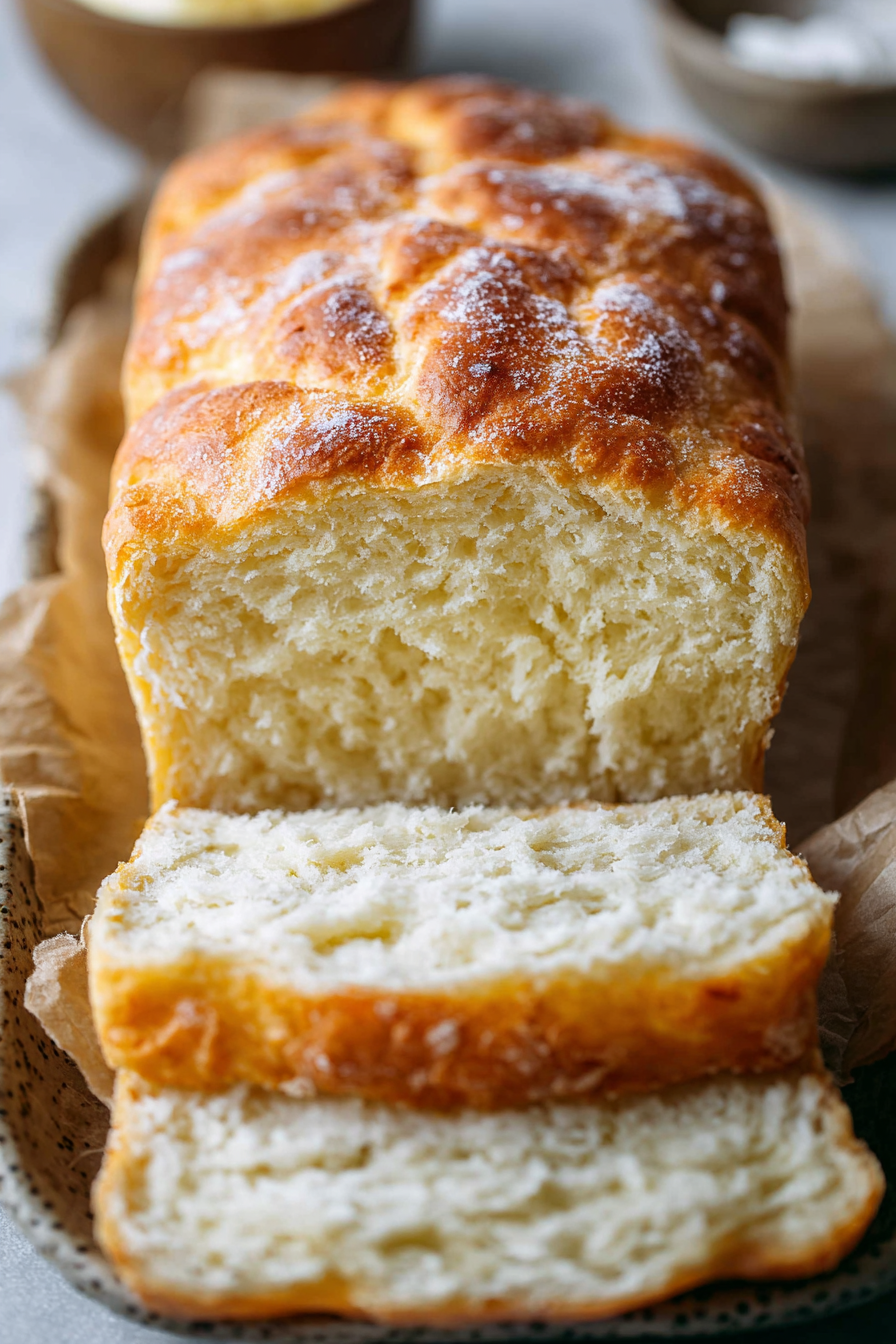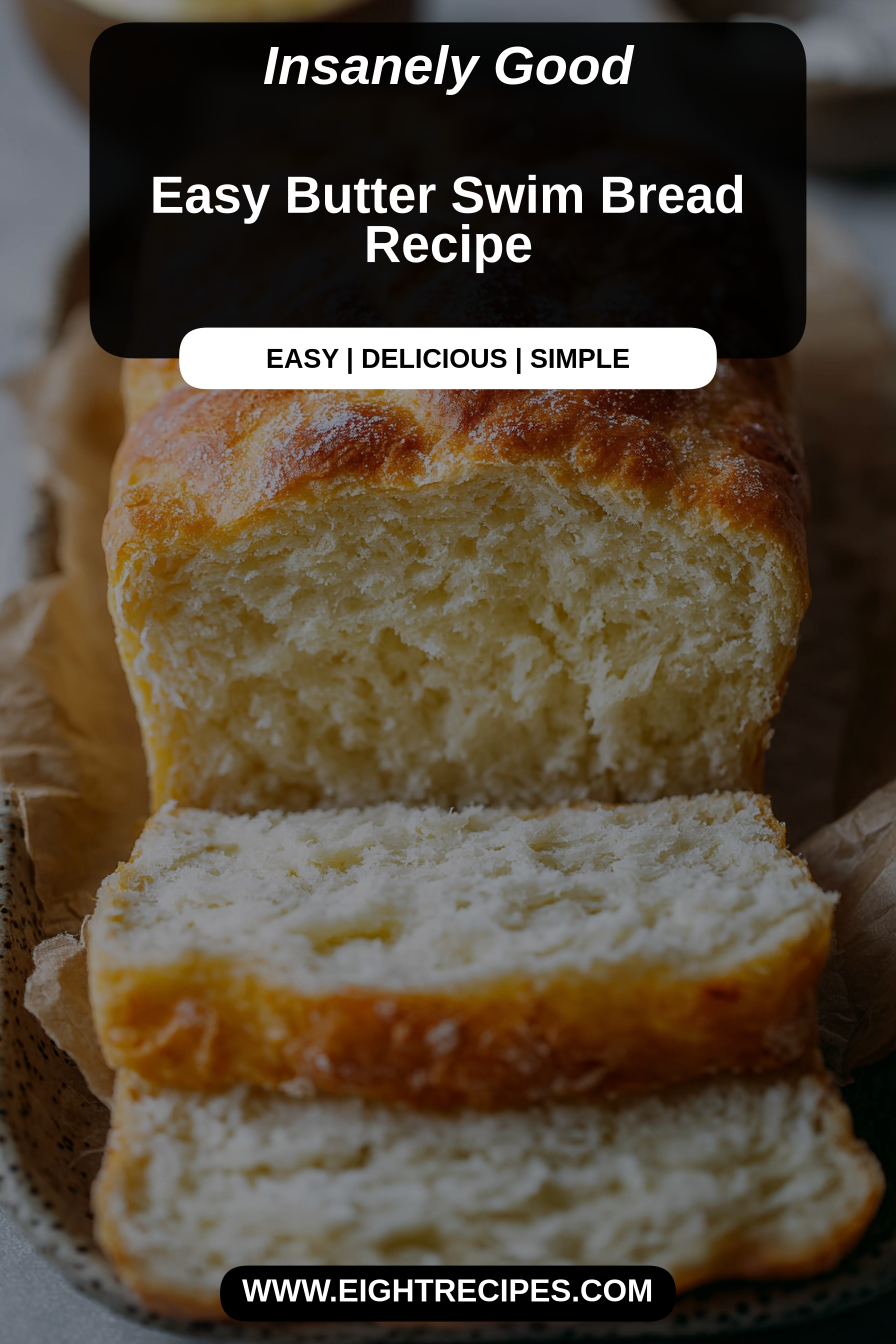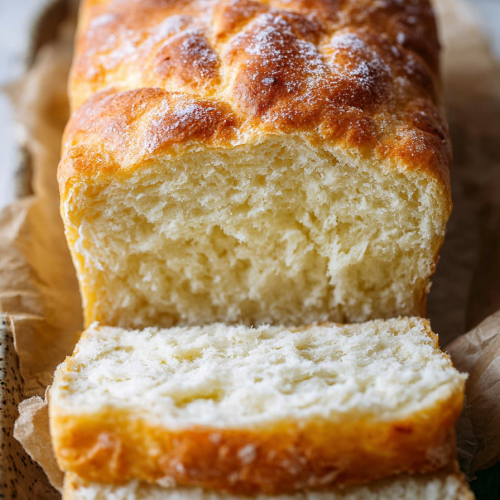Easy Butter Swim Bread Recipe

This Easy Butter Swim Bread is the kind of loaf that smells like comfort the moment it comes out of the oven — golden, buttery, and impossibly tender, with buttery pools that soak into the crumb so each bite feels indulgent without being fussy. It’s a simple enriched bread (think brioche-adjacent but easier) that bakes into a pull-apart loaf or one large loaf with a glossy, buttery top you’ll want to slice right away.
My little family has firmly declared this our weekend bread. My husband will wake up on Saturday just to grease the pan — he jokes that his only job is to measure the butter — and our kiddo insists on tearing off pieces while the loaf is still warm. It started as a “let’s use up the extra butter” experiment and now it’s become our go-to for breakfasts, dinner sides, and the kind of lazy afternoons where you dip a warm piece into jam and call it dessert.
Why You’ll Love This Easy Butter Swim Bread Recipe
– Ultra-buttery but not greasy: the technique lets butter flavor the crumb while keeping texture light and tender.
– Foolproof enough for weekday baking: forgiving dough that tolerates a bit of beginner wobble and still produces a beautiful loaf.
– Versatile serving options: perfect with jam, alongside soups and stews, or torn and dunked in coffee.
– Crowd-pleaser even for picky eaters: the mild, buttery flavor is universally appealing — it’s the kind of bread people keep coming back for.
Behind the Recipe
This recipe grew out of wanting that rich, buttery loaf without an all-day commitment. The biggest takeaway from making it at home is that fat and time are your friends: a moderate amount of butter and a short rest let the gluten relax and the fat distribute, creating a tender crumb. Temperature matters — slightly warm (not hot) melted butter soaks in better and won’t shock the yeast if you’re using one. People often rush the resting step or overwork the dough; that’s what tight crumbs and a tougher texture come from. The little touches that elevate this loaf are a light egg wash for shine and brushing again with melted butter straight from the oven so you get that characteristic “butter swim” glossy finish.
Shopping Tips
– Baking Basics: Use bread flour or all-purpose with a higher-protein blend for a chewier, structured crumb; if you prefer a softer loaf, choose all-purpose.
– Fats & Oils: Unsalted butter gives you control over seasoning; if you only have salted, reduce added salt in the recipe.
– Dairy: Whole milk or a mix of milk and cream adds richness; low-fat milks will work but yield a slightly drier crumb.
– Eggs: Large eggs are standard here — they help with structure and color, so don’t swap sizes without adjusting.
– Sweeteners: A small amount of sugar feeds the yeast and browns the crust; use granulated sugar or superfine if you have it for quicker dissolving.
Prep Ahead Ideas
– Mix the dough and let it rise in the fridge overnight; a cold, slow rise develops flavor and means a fresh loaf the next morning with minimal morning work.
– Measure dry ingredients and grate any add-ins (cheese, zest) the day before and store in airtight containers to speed assembly.
– Keep melted butter ready in the fridge (solidified will need a gentle rewarm) in a small jar so you can brush hot bread immediately after it leaves the oven.
Time-Saving Tricks
– Use a stand mixer for kneading to save hands-on time; if you don’t have one, a quick stretch-and-fold routine works well and only adds a few minutes.
– Freeze pre-portioned dough balls; thaw and let them proof for a quicker bake on busy nights.
– Preheat your oven while you shape the loaf so you can get it in hot and reduce total baking window; a warm baking surface helps with oven spring.
Common Mistakes
– Overworking the dough: I did this once and ended up with a tight, dense loaf — let the dough relax between kneading rounds and you’ll get a lighter crumb.
– Brushing cold butter: waiting until the loaf is warm makes a huge difference; cold butter won’t “swim” into the bread and you lose that glossy finish.
– Underproofing: the center can stay gummy if you rush it. Better to give it a few extra minutes to puff than to slice too early.
What to Serve It With
– Salty soups and stews (think tomato, chicken noodle, or French onion) — the bread soaks up broth beautifully.
– Soft cheeses and charcuterie for a relaxed evening board.
– Jam, honey, or browned butter for breakfast or an indulgent snack.
Tips & Mistakes
– Tip: Reserve a tablespoon of melted butter to brush right after baking — that final sheen is what gives the loaf its signature shine and flavor.
– Mistake to avoid: adding too much flour during shaping; a slightly tacky dough produces a softer final loaf.
– Rescue: if the crumb is a touch underbaked, tent loosely with foil and return to the oven for 5–8 minutes rather than slicing immediately.
Storage Tips
Store in airtight containers in the fridge. It reheats beautifully, but if you sneak a bite cold straight from the container, it still works.
Variations and Substitutions
– Brown butter swap: brown the butter for a nutty, deeper flavor that pairs especially well with a sprinkle of flaky sea salt on top.
– Herb & garlic: fold in chopped fresh herbs and a little grated garlic for a savory twist — great alongside roasted chicken.
– Cheesy version: stir in grated sharp cheddar or gruyère for a more substantial, savory pull-apart.
– Vegan option: use a high-quality plant butter and a flax or chia “egg” for binding; texture will be slightly different but still delicious.
– When not to swap: if you want that classic glossy, tender crumb, don’t skimp on the butter — reduced-fat substitutions change the character noticeably.

Frequently Asked Questions

Easy Butter Swim Bread Recipe
Ingredients
Main Ingredients
- 4 cups all-purpose flour
- 0.25 cups granulated sugar For a touch of sweetness
- 1 tbsp active dry yeast Make sure it's fresh!
- 1 tbsp salt Enhances the flavor
- 1 cup milk Warm, not hot
- 0.5 cups unsalted butter Melted; gives the bread a rich flavor
- 2 large eggs Room temperature for best results
Instructions
Preparation Steps
- Start by warming the milk in a microwave or on the stove until it's just warm to the touch; then add the yeast and sugar. Let this mixture sit for about 5 minutes until it becomes frothy. This means the yeast is active and ready to go!
- In a large bowl, whisk together the flour and salt. Once the yeast mixture is ready, stir in the melted butter and eggs. Mix all of this together until combined, then gradually add in the flour mixture until a dough forms.
- Knead the dough gently on a floured surface for a couple of minutes before placing it in a greased bowl. Cover it with a towel and let it rise in a warm spot until it doubles in size, which usually takes about an hour.
- Once the dough has risen, punch it down gently and transfer it to a greased baking dish. Pour any leftover melted butter over the top of the dough for that extra buttery finish. Let it rise again for about 30 minutes.
- Preheat your oven to 350°F (175°C). Bake the bread for 25-30 minutes or until it’s golden brown and sounds hollow when tapped. Allow it to cool slightly before enjoying warm slices fresh out of the oven.
